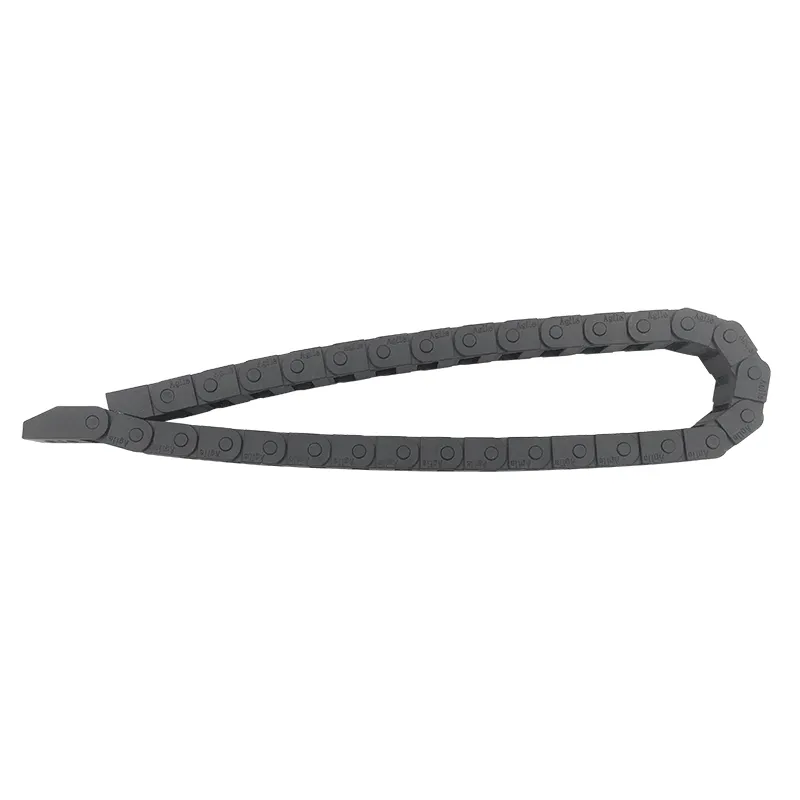Flexible Cable Management Solutions for Enhanced Industrial Efficiency and Safety
Understanding Cable Hose Carriers
Cable hose carriers, also known as cable chains, drag chains, or energy chains, are essential components in various industrial applications. They are designed to manage and protect cables, hoses, and other flexible components in environments where movement and mechanical loads are present. From manufacturing plants to robotics, these carriers play a vital role in ensuring operational safety and machinery efficiency.
Design and Structure
Cable hose carriers consist of a series of interconnected links that create a flexible channel for cables and hoses. These links are designed to pivot and bend, allowing the carrier to follow the movement of machinery or robots seamlessly. The design can vary widely, with options that range from lightweight plastic chains suitable for light-duty applications to heavy-duty steel chains that can withstand harsh conditions and significant loads.
The interior space of a cable hose carrier is crucial for organization and protection. Many designs come equipped with separators or dividers, which help keep different cables and hoses neatly arranged and prevent tangling. Additionally, some carriers feature covers or enclosures that provide extra protection from dust, debris, and physical damage.
Applications and Industries
Cable hose carriers are used across a wide array of industries, including automotive, aerospace, manufacturing, and robotics. In the automotive industry, they are employed in assembly lines to manage electrical and hydraulic systems, ensuring that the moving parts work seamlessly without causing wear or damage to the cables and hoses.
In robotics, cable carriers are critical for safeguarding the wiring and hoses that supply power and control signals to robotic arms. As these robots move in complex patterns, cable carriers enable a fluid range of motion while maintaining the integrity of the wiring system. This feature is particularly essential in high-speed applications where any snag or entanglement could lead to costly malfunctions or production delays.
Benefits of Cable Hose Carriers
cable hose carrier

One of the primary advantages of using cable hose carriers is enhanced mobility. By securely routing cables and hoses, these carriers reduce the risk of abrasion and wear, prolonging the life of the components housed within. This durability translates to lower maintenance costs and increased productivity.
Moreover, cable hose carriers contribute significantly to workplace safety. By preventing cables and hoses from becoming tripping hazards or getting caught in machinery, they create a safer environment for workers. This is particularly important in high-traffic industrial areas, where the risk of accidents is substantial.
Additionally, cable hose carriers provide neatness and order in complex machinery setups. An organized cabling system is crucial for maintenance and troubleshooting, allowing technicians to address issues quickly and efficiently. This organization also aids in compliance with safety regulations, as a tidy workspace is often a requirement in many industrial environments.
Choosing the Right Carrier
When selecting a cable hose carrier, several factors should be considered. First, the application and environment will greatly influence the choice. For instance, areas with extreme temperatures or exposure to chemicals may necessitate specific materials that can withstand such conditions.
Additionally, the size and capacity of the carrier should match the requirements of the project. Oversizing may lead to unnecessary costs and space consumption, while undersizing could lead to operational inefficiencies and damage to the cables or hoses.
Another critical aspect is the speed and travel distance of the application. Different carriers are designed to accommodate various movement speeds, and matching the carrier type to the application ensures optimal performance.
Conclusion
In conclusion, cable hose carriers are integral to the functionality and safety of modern industrial practices. Their ability to protect and organize cables and hoses while allowing for movement makes them invaluable in many sectors. As technology continues to advance, the designs and applications of cable hose carriers will likely evolve, providing even greater solutions for managing the complex systems that power our machines and industries.








